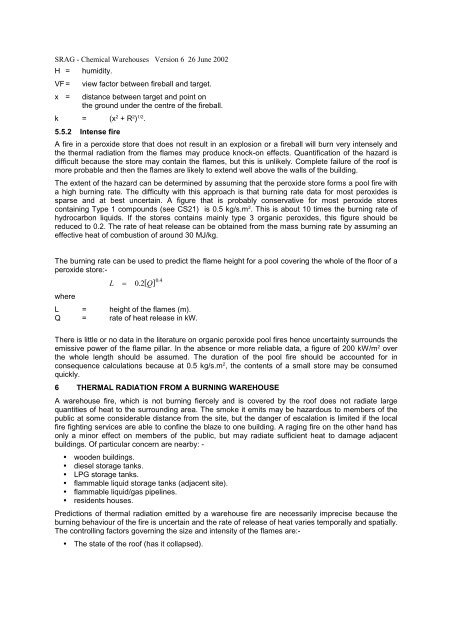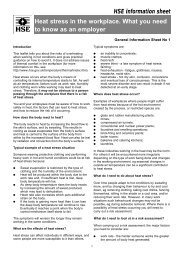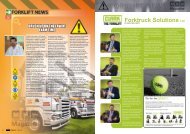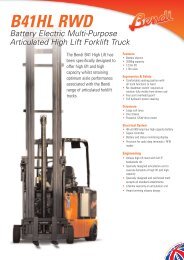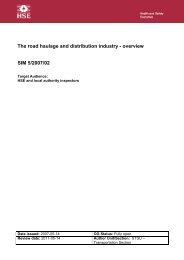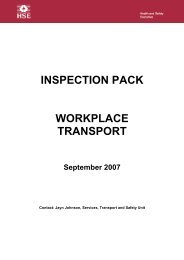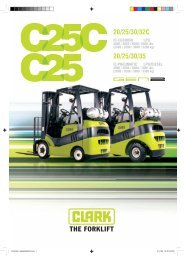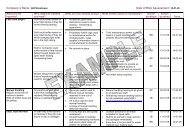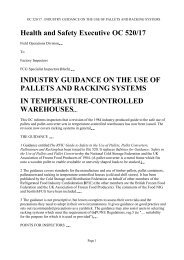Hazards - Forktruck Solutions Ltd.
Hazards - Forktruck Solutions Ltd.
Hazards - Forktruck Solutions Ltd.
Create successful ePaper yourself
Turn your PDF publications into a flip-book with our unique Google optimized e-Paper software.
SRAG - Chemical Warehouses Version 6 26 June 2002H = humidity.VF = view factor between fireball and target.x = distance between target and point onthe ground under the centre of the fireball.k = (x 2 + R 2 ) 1/2 .5.5.2 Intense fireA fire in a peroxide store that does not result in an explosion or a fireball will burn very intensely andthe thermal radiation from the flames may produce knock-on effects. Quantification of the hazard isdifficult because the store may contain the flames, but this is unlikely. Complete failure of the roof ismore probable and then the flames are likely to extend well above the walls of the building.The extent of the hazard can be determined by assuming that the peroxide store forms a pool fire witha high burning rate. The difficulty with this approach is that burning rate data for most peroxides issparse and at best uncertain. A figure that is probably conservative for most peroxide storescontaining Type 1 compounds (see CS21) is 0.5 kg/s.m 2 . This is about 10 times the burning rate ofhydrocarbon liquids. If the stores contains mainly type 3 organic peroxides, this figure should bereduced to 0.2. The rate of heat release can be obtained from the mass burning rate by assuming aneffective heat of combustion of around 30 MJ/kg.The burning rate can be used to predict the flame height for a pool covering the whole of the floor of aperoxide store:-L 0.2[Q] 0.4whereL = height of the flames (m).Q = rate of heat release in kW.There is little or no data in the literature on organic peroxide pool fires hence uncertainty surrounds theemissive power of the flame pillar. In the absence or more reliable data, a figure of 200 kW/m 2 overthe whole length should be assumed. The duration of the pool fire should be accounted for inconsequence calculations because at 0.5 kg/s.m 2 , the contents of a small store may be consumedquickly.6 THERMAL RADIATION FROM A BURNING WAREHOUSEA warehouse fire, which is not burning fiercely and is covered by the roof does not radiate largequantities of heat to the surrounding area. The smoke it emits may be hazardous to members of thepublic at some considerable distance from the site, but the danger of escalation is limited if the localfire fighting services are able to confine the blaze to one building. A raging fire on the other hand hasonly a minor effect on members of the public, but may radiate sufficient heat to damage adjacentbuildings. Of particular concern are nearby: - wooden buildings. diesel storage tanks. LPG storage tanks. flammable liquid storage tanks (adjacent site). flammable liquid/gas pipelines. residents houses.Predictions of thermal radiation emitted by a warehouse fire are necessarily imprecise because theburning behaviour of the fire is uncertain and the rate of release of heat varies temporally and spatially.The controlling factors governing the size and intensity of the flames are:- The state of the roof (has it collapsed).


